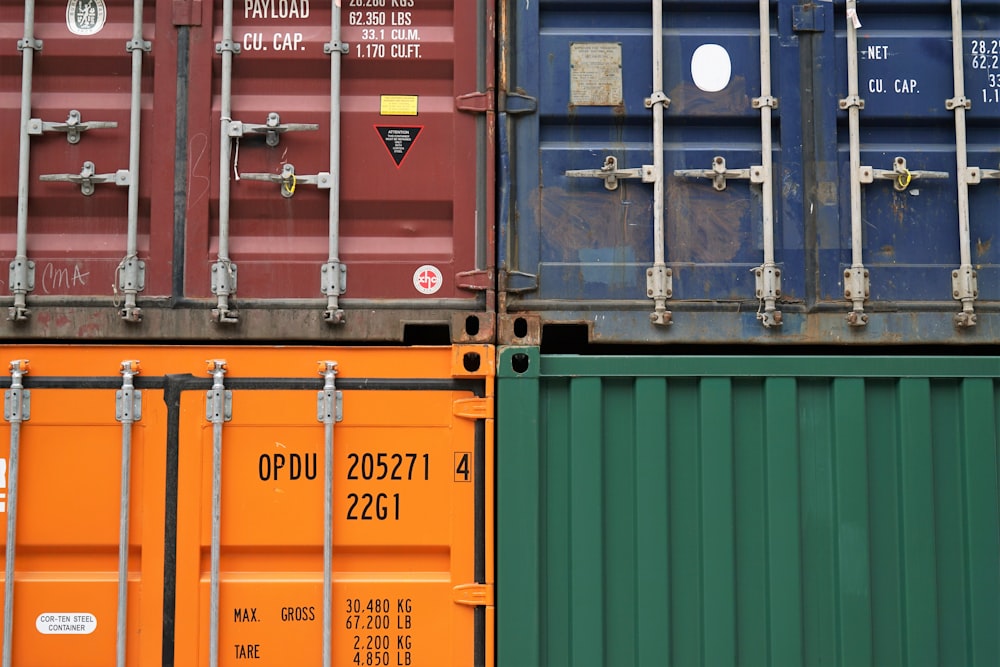

Overview
Over the weekend, many people in North America watched to see whether the legendary groundhog Punxsutawaney Phil saw his shadow. But investors are on the lookout for a different shadow: the potential economic and market impact of the new tariffs imposed by the United States.Our team of global experts at Russell Investments have been carefully monitoring and analyzing the potential for policy changes in President Trump’s second term in office. For instance, in December 2024, our North American Chief Investment Strategist highlighted four important areas of focus: (1) tariffs, (2) immigration, (3) fiscal policy, and (4) deregulation.A key question for investors has been whether the positive impacts of potential tax cuts and deregulation would outweigh any adverse effects from potentially higher tariffs and more restrictive immigration policies. Up until now, U.S. equity investors appeared to believe this would be the case. The benchmark S&P 500 Index has rallied an additional 5% between election day and January 31, 2025, setting new all-time highs in the process.Many investors had hoped that President Trump would be more measured in his approach to tariffs than his campaign promises. After all, in his first term in office, President Trump’s tariff increases were significantly lower than what he had discussed while campaigning.However, those hopes were somewhat dashed, as President Trump formally signed an executive order over the weekend that would impose new tariffs on Canadian Mexican, and Chinese imports, effective February 4, 2025.Now that these tariff plans have been formally unveiled, we provide some updated analysis in this article on the impact of these tariffs to the U.S. In addition, we broaden our commentary to include insights into how the economies and markets of the targeted U.S. trading partners might be affected.
The latest U.S. tariff announcement
Over the weekend, President Trump announced new tariffs on goods imported from Canada, Mexico, and China. Goods from Canada and Mexico face a 25% tariff (with the exception of Canadian fuel imports, which are subject to a 10% tariff), whereas goods from China face a 10% tariff.Based on our analysis of U.S. import data through November 2024, these tariffs would cover roughly 42% of all U.S. imports, and would raise the effective tariff rate by 7.7%.  Source: Russell Investments, U.S. Bureau of Economic Analysis, Tax Foundation. Updated January 2025. “High end” reflects the effective tariff rate if a universal 20% tariff would be applied to all U.S. imports. “Feb 4” shows the effective tariff rate with the new tariffs to be imposed on Feb 4. “No New Tariff” shows what the effective tariff rate would have been had no additional tariffs been imposed.
Source: Russell Investments, U.S. Bureau of Economic Analysis, Tax Foundation. Updated January 2025. “High end” reflects the effective tariff rate if a universal 20% tariff would be applied to all U.S. imports. “Feb 4” shows the effective tariff rate with the new tariffs to be imposed on Feb 4. “No New Tariff” shows what the effective tariff rate would have been had no additional tariffs been imposed.
Prior to the imposition of these new tariffs, the vast majority of U.S. imports from Canada and Mexico could enter the U.S. duty-free, thanks to the US-Mexico-Canada Agreement. Therefore, products that could see the highest increase in effective tariff rates include Canadian lumber, Mexican auto parts, and groceries.
How are Canada, Mexico, and China responding?
Among the three trading partners, Canada has publicly taken the most vocal stance, with both the incumbent Prime Minister (Justin Trudeau), as well as several premiers of Canada’s provinces, emphasizing the need for a forceful response. After President Trump officially signed an executive order to implement the new tariffs, Prime Minister Trudeau announced that Canada would be imposing a 25% retaliatory tariff on roughly $155 billion CAD (Canadian Dollars) of U.S. imports. This amounts to roughly 1/3 of Canadian imports from the U.S. The retaliatory tariff would take a phased-in approach, with tariffs initially imposed on $25 billion CAD of imports from the U.S., and the remaining tariffs to become effective in 21 days. In addition, multiple provinces across Canada, including Ontario and British Columbia (which comprise more than half of Canada’s population), have announced plans to halt the sale of U.S. liquor.Mexican President Claudia Sheinbaum has announced that Mexico will implement “Plan B,” a plan that entails both tariff and nontariff forms of retaliation. Details of this plan are expected to be made public on Monday morning. China has announced it will file a WTO (World Trade Organization) lawsuit in response to the U.S. tariffs, and may also take “corresponding countermeasures” to “safeguard its rights and interests.”
How are markets reacting?
As of around 5:00 p.m. Pacific Time on Sunday, Feb. 2, markets appear to be having a modest risk-off reaction:
What’s the potential impact on the U.S?
While tariffs can impact the global economy through multiple transmission mechanisms, we find it helpful to frame the analysis by looking at two key areas: inflation and growth. First, let’s start with the inflation angle. We’ve estimated in the past that every 1 percentage point increase in the effective tariff rate can result in a 0.1% increase in the prices paid. Thus, these tariffs may add a moderate 0.77% increase one-time increases onto prices. While this may slightly push out when core inflation will return to the Fed’s target, it’s important to remember that tariffs generally represent a one-time boost to price levels, whereas inflation measures a rate of change in prices. Therefore, the inflationary impulse from tariffs might be short-lived. From an economic growth perspective, the tariffs are likely to weigh on economic activity, but the magnitude of the impact may hinge on the extent to which tariff proceeds are funneled towards other pro-growth policies and the extent to which U.S. trading partners retaliate. For instance, think tanks like the Tax Foundation estimated a 0.4% hit to U.S. GDP (gross domestic product) in a no-retaliation scenario, whereas other economists estimated a 1 percentage point hit to GDP in a more full-throated retaliation scenario.In December 2024, the industry consensus had been baselining 2025 GDP growth of roughly 2.1% for the U.S (pre-tariff). Factoring in the potential hit from tariffs based on the recent announcements, we conclude that the U.S. economy would likely see meaningfully slower growth, albeit still avoid a recession.From an earnings perspective, we believe that 2025 earnings growth for the S&P 500 could take a mild hit of around 2.5 percentage points. With the I/B/E/S consensus expecting 13% of earnings growth for S&P 500 in 2025 prior to the tariff announcement, this could mean that earnings growth will end up being closer to 10% year-over-year. That being said, 10% year-over-year would still be a robust pace of earnings growth.In the near-term, tariffs could potentially cause a mild increase in the U.S. Dollar, but the upward movement could be somewhat limited given that the U.S. dollar had already increased by 5% between the election and Jan. 31, 2025, and given that medium-term valuation measures suggest that the U.S. dollar might be somewhat overvalued compared to other major currencies.
What’s the potential impact onto U.S. trading partners?
Canada is likely to be heavily impacted by the new tariffs. According to Statistics Canada, exports to the U.S. represented nearly 18% of Canadian gross domestic product (GDP). With the U.S. imposing new tariffs on Canadian products, it’s almost certain that Canada’s economy would get hit hard. The hypothetical scenario outlined in the Bank of Canada (BoC)’s latest Monetary Policy Report is somewhat more punitive than the current tariff plans (it assumes the U.S. imposes a 25% tariff on all trading partners/products), but nevertheless gives a useful guide to the pain that might be inflicted on the Canadian economy. The BoC estimates that GDP could see a 2.5% hit relative to the no-tariff status quo. This would mean that if the tariffs are sustained instead of transitory, the Canadian economy faces a substantial risk of slipping into a recession, that comes on the heels of an already challenging macroeconomic backdrop.Similarly, the Mexican economy may also face substantial headwinds as a result of these new tariffs. Based on data from the U.S. Bureau of Economic Analysis and the International Monetary Fund, Mexican exports to the U.S. is expected to be more than a quarter of Mexican GDP in 2024. With the International Monetary Fund’s pre-tariff projection of only 1.3% real GDP growth for Mexico in 2025, Mexico too runs the risk of having GDP contract as a result of the tariffs.Meanwhile, China could face less of a direct impact from the tariffs. Not only is the additional levy on Chinese imports less than the rate being applied to Mexican and Canadian goods, but also China has a more diversified economy relative to Mexico and Canada. Based on the U.S. Bureau of Economic Analysis and International Monetary Fund data, Chinese exports to the U.S. only account for around 2.5% of its GDP.
How might central banks and governments respond?
Bank of Canada Governor Tiff Macklem pointed out the dilemma that the central banks will face as a result of these tariffs: counteracting a drag in economic growth requires loosening monetary policy, while counteracting higher prices necessitates holding monetary policy restrictive for longer. Central banks must carefully balance these competing forces. From our perspective at Russell Investments, we believe that central banks are likely to focus more on the potential growth damage, as the drag to growth could be more prolonged relative to the likely one-time hit in prices.Each central bank will also need to take into account the “starting point” of existing macroeconomic conditions in determining how it might wish to proceed.For the U.S., the economy has generally remained resilient in the lead-up to the tariff announcement. U.S. GDP growth in Q4 2024 was slightly above-trend (at 2.3% Seasonally Adjusted Annualized Rate), and the unemployment rate still remains relatively measured at 4.1%. Chair Powell had indicated at the January meeting that the Federal Reserve was in “no hurry to cut rates,” and that he wanted to see either more progress on the inflation fight or a weakening of the labor market before making the next rate cut. Given that we believe the impacts of the tariff standoff onto the U.S. economy would be somewhat measured, we believe that Chair Powell could adopt a “wait and see” approach when it comes to the path of monetary policy.In contrast, the Bank of Canada might be willing to respond more dovishly. The Canadian economy has already been under pressure, with a sharper rise in the unemployment rate compared to the U.S. in the run-up to the tariff announcement. While the current Bank of Canada preferred measure of core inflation is still slightly above the 2% midpoint of its 1% to 3% control band, other measures of core inflation have already fallen below 2% in Canada. Consequently, we believe that the Bank of Canada has the latitude to respond aggressively should economic growth deteriorate further. As of Sunday, Feb. 2, markets anticipate that the Bank of Canada might bring interest rates down to 2.4% by the end of 2025, a touch below the midpoint of the Bank of Canada’s estimated neutral rate of interest.We continue to believe that the markets are underappreciating the magnitude of interest rate cuts that might be necessary in Canada to prop up the economy. Although the Bank of Canada only cut interest rates by 25 basis points at its recent January meeting, we believe that a deeper economic slowdown could bring about the return of outsized interest rate cuts. And if a recession were to materialize, interest rates would likely need to fall well below 2%.Governments in impacted regions may also respond with fiscal stimulus too, in an effort to counteract the pain felt by consumers and businesses from the tariffs. This also remains an important watchpoint.
Why does uncertainty remain elevated?
Even with the formal tariff declaration, macroeconomic uncertainty still remains elevated. For instance, investors should not discount the possibility of further tariff hikes. President Trump has recently warned that he may impose additional tariffs on both specific classes of goods (e.g. semiconductors, pharmaceutical products, and steel), and on specific trading partners (e.g. he has been contemplating additional levies on European imports). Moreover, he has also indicated the potential to scale up tariffs in response to the retaliatory actions of the key trading partners.On the other hand, we continue to believe that President Trump may be using the tariff announcements as a negotiating tool to extract concessions from trading partners. For instance, commerce secretary Howard Lutnick and some U.S. lawmakers have been pointing to a desire to get Canada to increase its defense spending. And Canadian lawmakers indicated that the U.S. has advised them that there could be a “window” to revisit the imposition of these tariffs in March.Our North American Chief Investment Strategist previously observed that “Trump championed the strength of the economy and stock market during his first term, and an aggressive trade war that risked both would conflict with some of his past priorities.” We continue to believe that this is an important observation. Although these tariffs have now been implemented against key U.S. trading partners, it’s possible that if the damage inflicted on the U.S. economy becomes more noticeable, President Trump could try to find an off-ramp. This sentiment could potentially limit the duration of the tariff standoff. Another layer of uncertainty stems from how businesses and consumers respond to the tariff increases. We’ve assumed that businesses would pass on 100% of the cost of tariffs to consumers. But if businesses anticipate that further tariffs may be forthcoming, it’s possible they “take out insurance” in the form of passing on more than 100% of the cost. Conversely, given that some consumers (particularly at the lower end of the income spectrum) have already been balking at high prices, it’s possible that businesses may need to absorb part of the tariff increases in the form of reduced profit margins.
What should investors consider when positioning their portfolios?
At Russell Investments, we believe that in times of uncertainty, investors would benefit from staying disciplined. Although the tariffs could adversely impact economic growth, particularly in Mexico and Canada, there’s also the potential for central banks and governments to step in with support to offset the tariff impacts.We will continue to carefully apply our Cycle-Valuation-Sentiment (CVS) framework to monitor the global investment landscape for opportunities and risks.In our investment portfolios, we’ve generally been maintaining a slightly defensive posture in light of the macroeconomic uncertainty. Although we have not yet re-initiated a tactical overweight to duration, we do believe that U.S. and Canadian government bonds can still play a key defensive role.Meanwhile, although we believe that non-U.S. equities may be more prone to cyclical risks, we also view non-U.S. equities to be closer to fair value than U.S. equities. Consequently, we believe in the continued importance of regional diversification. In addition, we continue to believe that active management and careful security selection can help drive better portfolio outcomes as policy changes create more dispersion in the market.More By This Author:European And Canadian Central Banks Lower Rates While The U.S. Stands Pat A Long-Term Perspective For The Road Ahead: Insights From Our Q4 2024 Economic And Market Review Key Takeaways From The Trump Administration’s First Days In Office
















